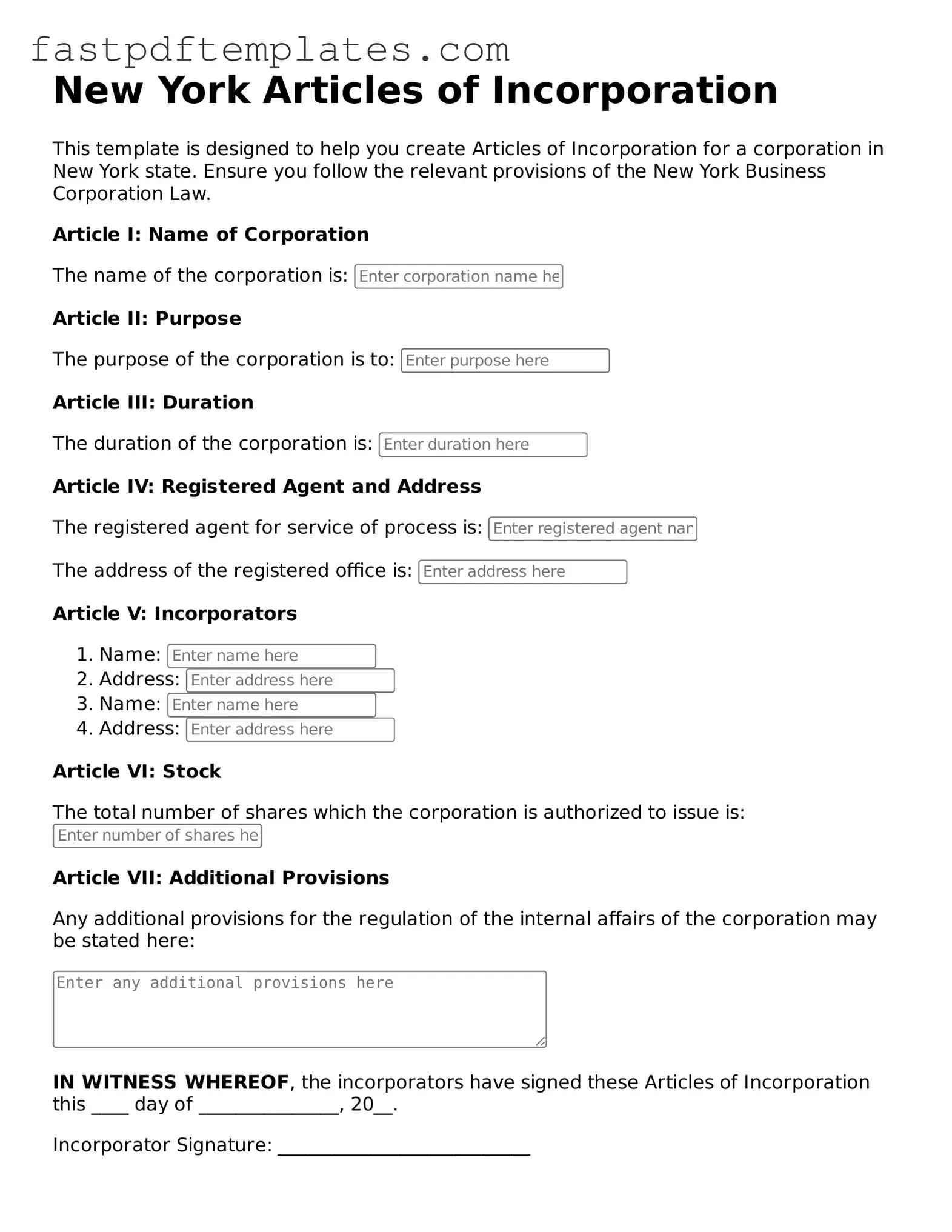The Certificate of Incorporation is similar to the Articles of Incorporation in that both documents serve as foundational legal paperwork for establishing a corporation. The Certificate of Incorporation is often used interchangeably with the Articles of Incorporation in some jurisdictions. It outlines essential information about the corporation, such as its name, purpose, and structure. Both documents must be filed with the appropriate state authority to legally create the corporation.
The Bylaws of a corporation are another document that aligns closely with the Articles of Incorporation. While the Articles provide basic information about the corporation, the Bylaws detail the internal rules and procedures for governance. These rules cover aspects such as the roles of officers and directors, meeting protocols, and voting procedures. Together, they ensure that the corporation operates smoothly and adheres to its stated objectives.
The Operating Agreement is similar to the Articles of Incorporation, particularly for limited liability companies (LLCs). This document outlines the management structure, ownership percentages, and operational procedures for the LLC. Like the Articles, it is essential for establishing the legal framework within which the business will operate. Both documents are crucial for defining the relationship among members and protecting their interests.
The Partnership Agreement is another document that shares similarities with the Articles of Incorporation, especially in the context of business formation. This agreement outlines the terms and conditions under which partners will operate a business. It specifies each partner's contributions, roles, and profit-sharing arrangements. While the Articles focus on corporations, the Partnership Agreement serves a similar purpose for partnerships, providing a clear structure for collaboration.
The Certificate of Good Standing is a document that can be related to the Articles of Incorporation, as it serves as proof that a corporation has been properly formed and is in compliance with state regulations. This certificate may be required when a corporation seeks to engage in business activities in other states or when applying for loans. It confirms that the corporation has met all necessary legal obligations since its formation.
The Statement of Information is another document that bears similarities to the Articles of Incorporation. This document is often required by states shortly after incorporation and periodically thereafter. It provides updated information about the corporation, including its address, officers, and registered agent. Maintaining accurate information is essential for compliance and communication purposes.
The Annual Report is akin to the Articles of Incorporation in that it is a requirement for maintaining a corporation's good standing. This report typically includes financial information, updates on corporate activities, and confirmation of the corporation's address and officers. Filing the Annual Report ensures that the corporation remains compliant with state laws and continues to operate legally.
The Foreign Qualification application is similar to the Articles of Incorporation in that it allows a corporation formed in one state to operate in another. This document must be filed in the new state where the corporation wishes to conduct business. It provides information about the corporation's formation and its compliance with the laws of its home state, similar to how the Articles establish the corporation's legitimacy.
The IRS Form 2553, which is used to elect S Corporation status, shares a relationship with the Articles of Incorporation. This form must be filed by eligible corporations that wish to be taxed as S Corporations. By completing this form, the corporation indicates its desire for special tax treatment, which can affect its financial obligations and tax liabilities. Both documents are essential for the corporation's legal and financial structure.
The Stock Certificate is another document that relates to the Articles of Incorporation. This certificate represents ownership in a corporation and is issued to shareholders. The Articles of Incorporation typically outline the types and classes of stock that can be issued, while the Stock Certificate serves as tangible proof of ownership. Both documents are integral to the corporation's capital structure and shareholder rights.
